Year 5 - Fractions Learning Path (Blue Profile)

Before starting this Learning Path
Before starting this Learning Path, the student should be confident with their times-tables, have a basic knowledge of Fractions and understand how to add and subtract equivalent fractions.
Learning Outcomes
- Compare and order fractions
- Identify, name and write equivalent fractions of a given fraction, represented visually, including tenths and hundredths
- Use common factors to simplify fractions; use common multiples to express fractions in the same denomination
- Add and subtract fractions with different denominators and mixed numbers, using the concept of equivalent fractions
- Multiply simple pairs of proper fractions, writing the answer in its simplest form
- Divide proper fractions by whole numbers
- Associate a fraction with division and be able to divide simple fractions
General teaching tips:
Blue profiles are usually confident workers. They are strong in their mathematical abilities but when they get something wrong, they either explain away why it was wrong (oh I just forgot to ...) or it's a blow to their confidence. Encourage individual work as they tend to enjoy this and strive to complete the questions without any additional help. They may even jump in when you're explaining a new concept, but are not always right in their explanations so ensure that they grasp the method correctly before rushing into the problems and questions on their own.
Step 1:
Name: Equivalent Fractions
Learning outcomes:
- Identify, name and write equivalent fractions of a given fractionincluding tenths and hundredths (ENCY5)
- Compare and order fractions whose denominators are all multiples of the same number (ENCY5)
Timed
Set a strict, 7 minute timer for the students to finish off the first worksheet. This should just be a reminder of the topic as the student should have covered this material in school/ in the previous year. Once they've completed the sheet, pick on different students to keep them engaged in their work. They may otherwise start they look for something else to occupy their attention while they wait.
If the student has not covered Equivalent Fractions, cover the first couple of questions on the board and ensure their understanding. These students should be able to pick it up quickly due to their strong arithmetic abilities.
Worksheet: Equivalent fractions D 2

Step 2:
Name: Add/Subtract Mixed Fractions
Learning outcomes:
- Add and subtract fractions with the same denominator and denominators that are multiples of the same number (ENCY5)
- Recognise mixed numbers and improper fractions and convert from one form to the other and write mathematical statements > 1 as a mixed number (ENCY5)
- Add and subtract fractions with different denominators and mixed numbers, using the concept of equivalent fractions (ENCY6)
Introduce concept
Use this puzzle to introduce the concept of adding and subtracting unlike fractions to students with the Blue Profile. Complete questions L, W, S with them. Once you're confident that the students have understood, let them complete the next 3 questions on their own and encourage them to write out the equivalent fractions workings rather than doing this in their head. Ensure to check through these questions and remain vigilant as they may make mistakes here that they'll carry through to the rest of the questions on the worksheet. Teach how to do this but stay vigilant for the first few as if they make a mistake here, will likely make it throughout the sheet.
Worksheet: Add subtract unlike fractions W 1
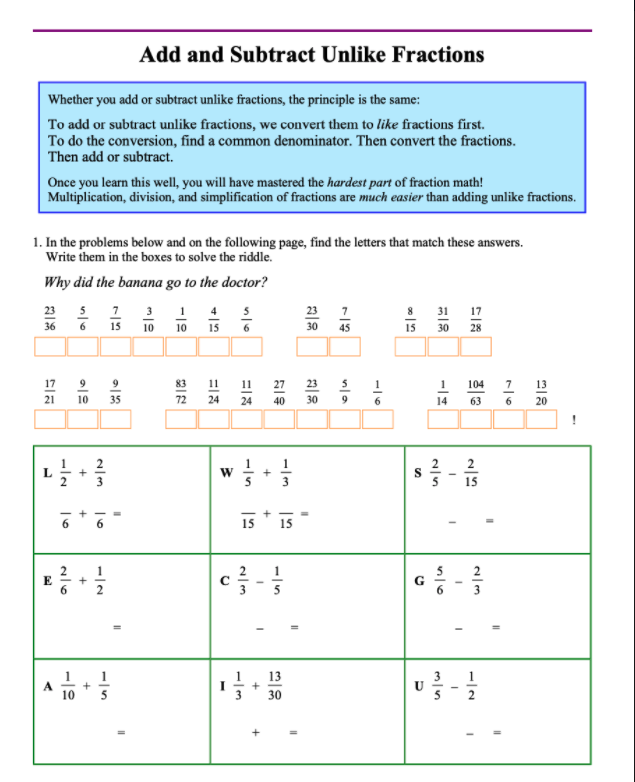
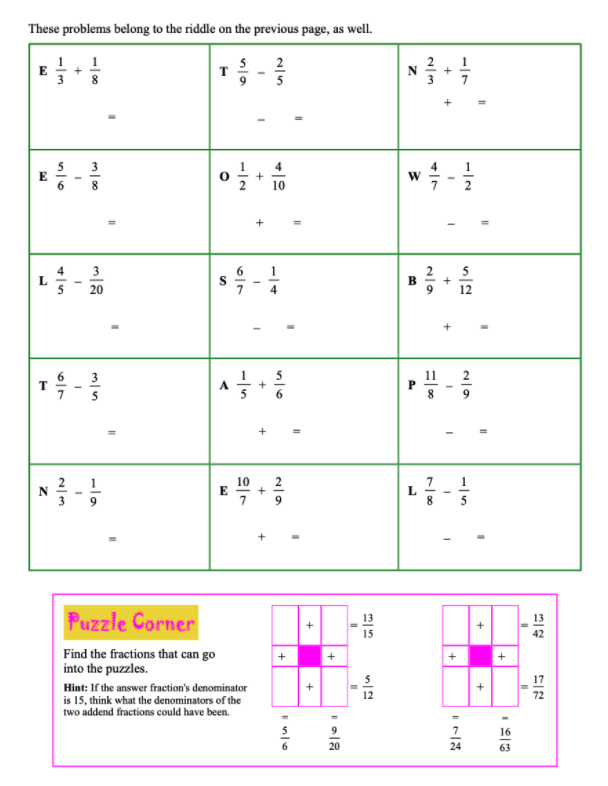
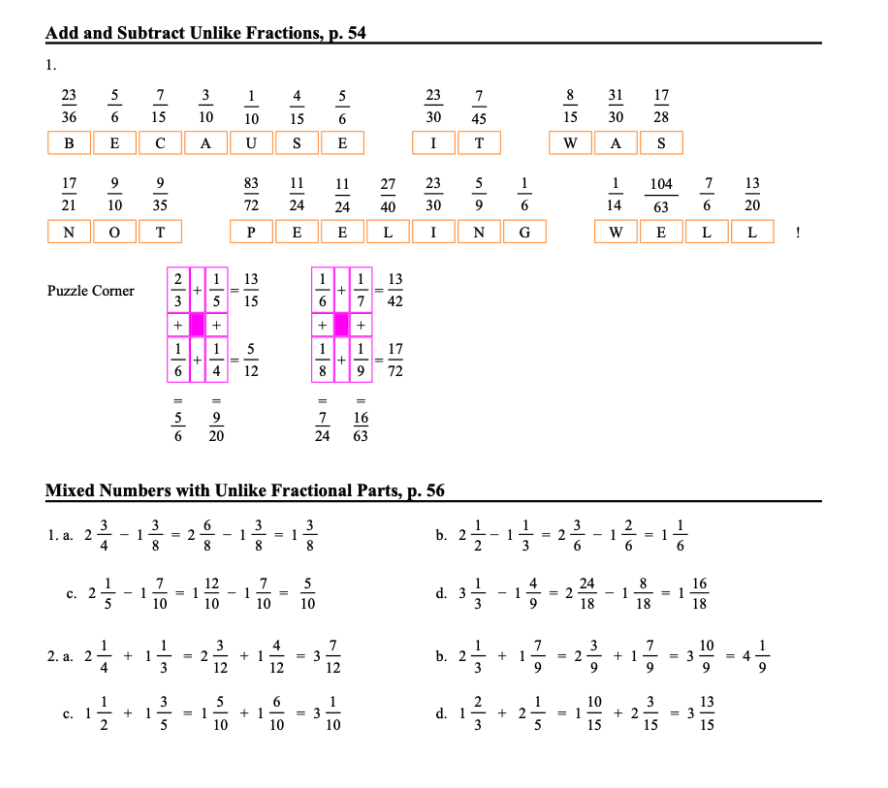
Step 3:
Name: Multiply fractions & whole numbers
Learning outcomes:
- Multiply proper fractions and mixed numbers by whole numbers (ENCY5)
- Add and subtract fractions with different denominators and mixed numbers, using the concept of equivalent fractions (ENCY6)
Word problems
These word problems help round out the topic. Work through the first one together slowly and methodically to help the student get a grasp of how to tackle the word problems. Once they are happy with the explanation, they should then be able to replicate the method used for others.
With the rest of the questions, encourage them to verbalise back to you what they think the question means and the steps they'll take so they understand what the question is asking of them before they rush into it and ensure that they write their complete workings out very clearly.
Once they have grasped the mathematical method of completing these questions, you can introduce the Bar Model - a visual method of tackling Fraction questions. See example below:
Worksheet: Multiply fractions and whole numbers W 5
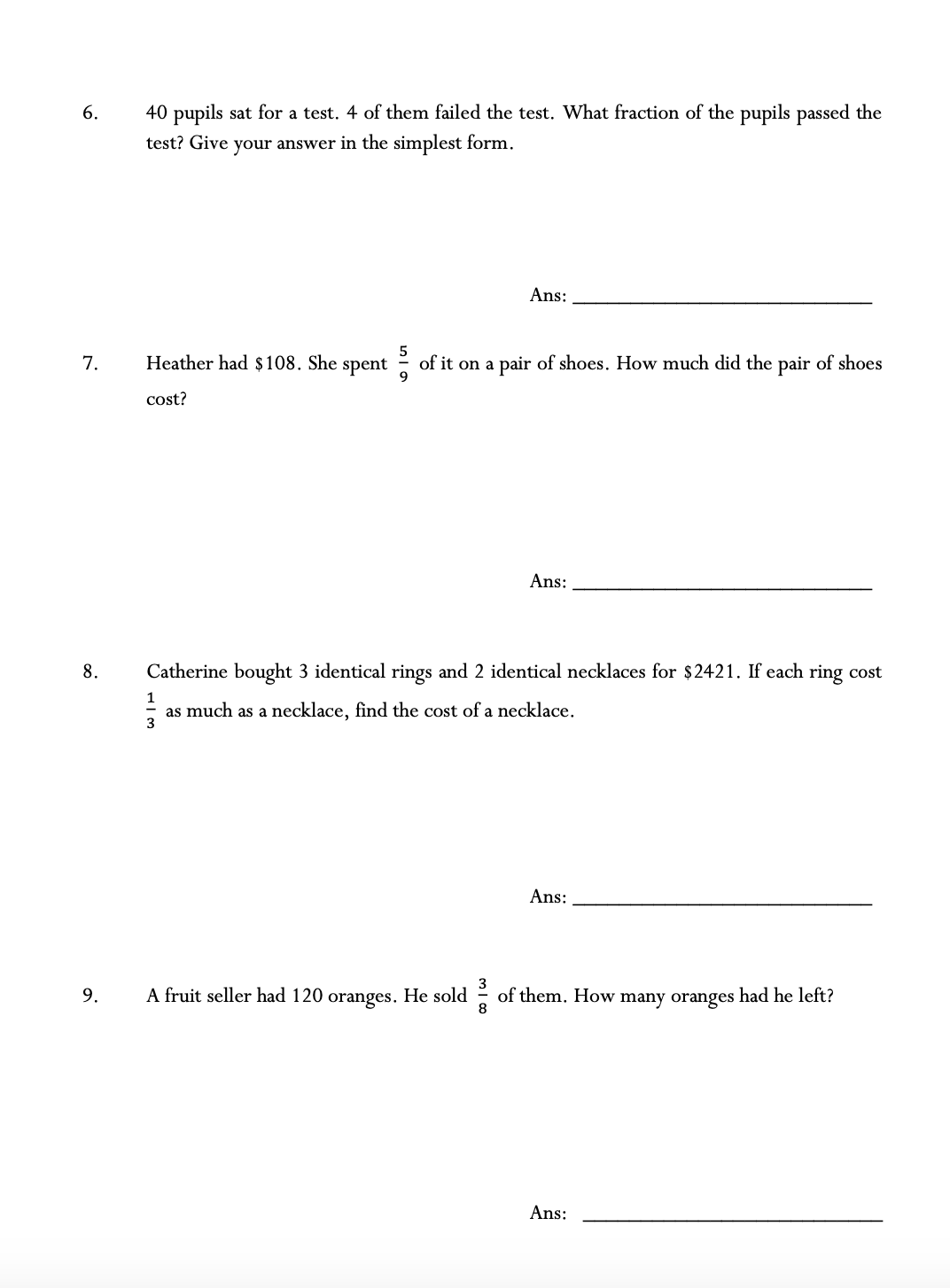
Step 4:
Name: Simplifying fractions
Learning outcomes:
- Use common factors to simplify fractions; use common multiples to express fractions in the same denomination (ENCY6)
Practice
They should be able to do this very well so time them for this and say they need to complete the page in the time limit as this is just an exercise in times tables, which if are strong, means the sheet should be super easy.
Worksheet: Simplify fractions D 1
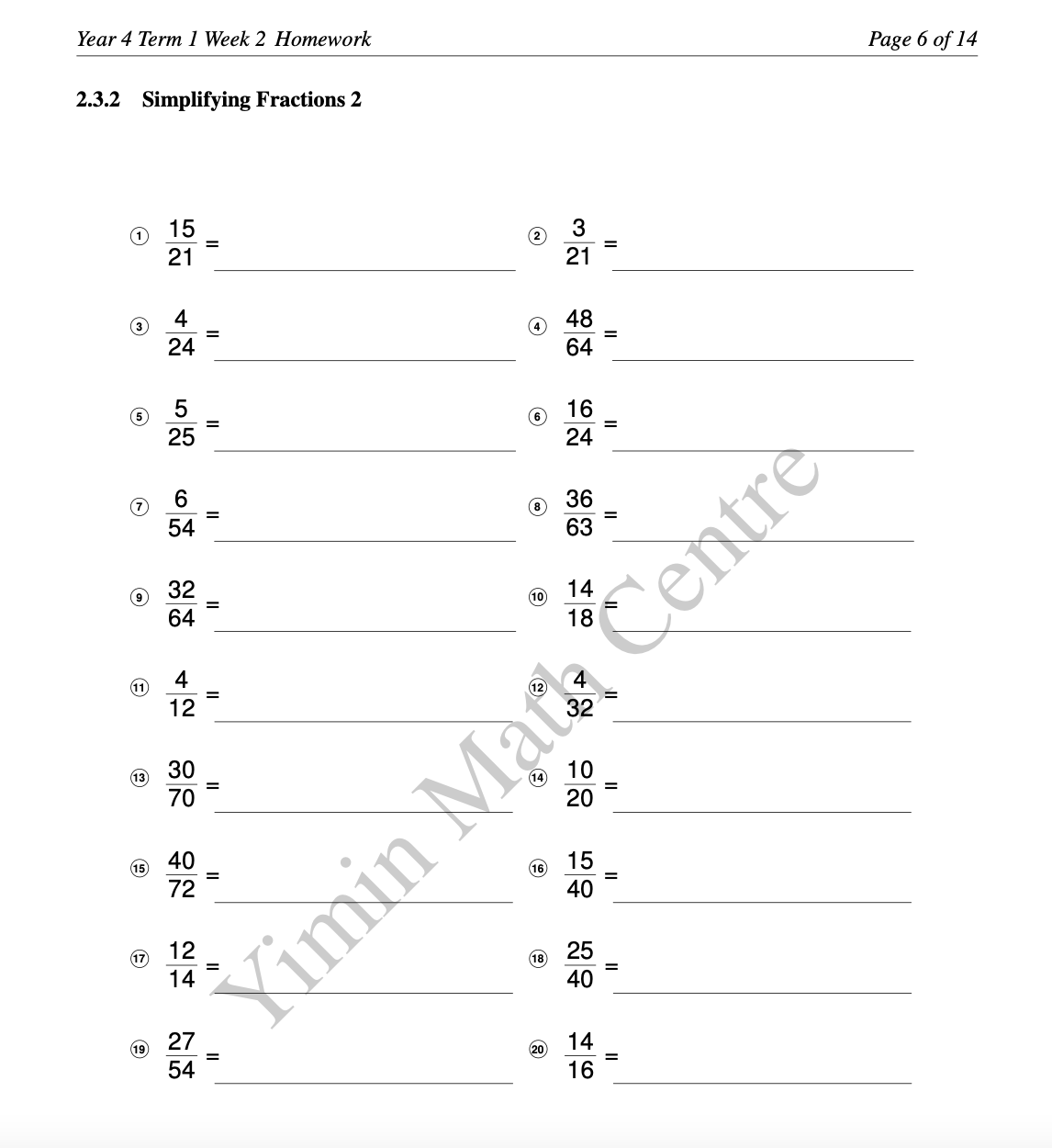
Step 5:
Name: Multiply proper fractions
Learning outcomes:
- Multiply simple pairs of proper fractions, writing the answer in its simplest form (ENCY6)
Introduce concept
Before explaining the concept to them, ask them to try out the first question without any further instruction and see what they would do. If they struggle on it, ask them what the concept of multiplication means and if they are confused by this, explain that we do multiplication all the time, such as, a half of 4. Give them a real-life scenario of having 3/5ths of a cake and asking what half of that would be.
Once they are clear on the concept of multiplication, do the first two questions with them and write out your working clearly. In question 2, introduce the bowtie method so the student learns how to cross cancel, crossing out the 4 for 1 and the 8 for 2.
Once they have learnt the method, they should be able to finish off the rest of the sheet quite quickly.
Worksheet: Multiply fractions D 1

Step 6:
Name: Divide proper fractions
Learning Outcomes:
- solve problems involving increasingly harder fractions to calculate quantities, and fractions to divide quantities, including non-unit fractions where the answer is a whole number (ENCY4)
- divide proper fractions by whole numbers and proper fractions (ENCY6)
Introduce concept
Before explaining the concept to them, ask them to try out the first question without any further instruction and see what they would do. If they struggle on it, ask them what the concept of divions means and if they are confused by this, explain that we do division all the time. Give them a real-life scenario of a piano lesson: If my piano lessons are half an hour and I did 10 hours of piano, how many lessons did I have? They should be able to grasp this quickly.
Once they have learnt the concept, explain that they can complete dividing a fraction by flipping the second fraction over and multiplying it. Once they understand this, let them get on with the rest of the worksheet, writing out their workings so you can check that they are flipping the fractions as they may forget them in their hurry to finish off the questions.
Worksheet: Divide proper fractions D 1
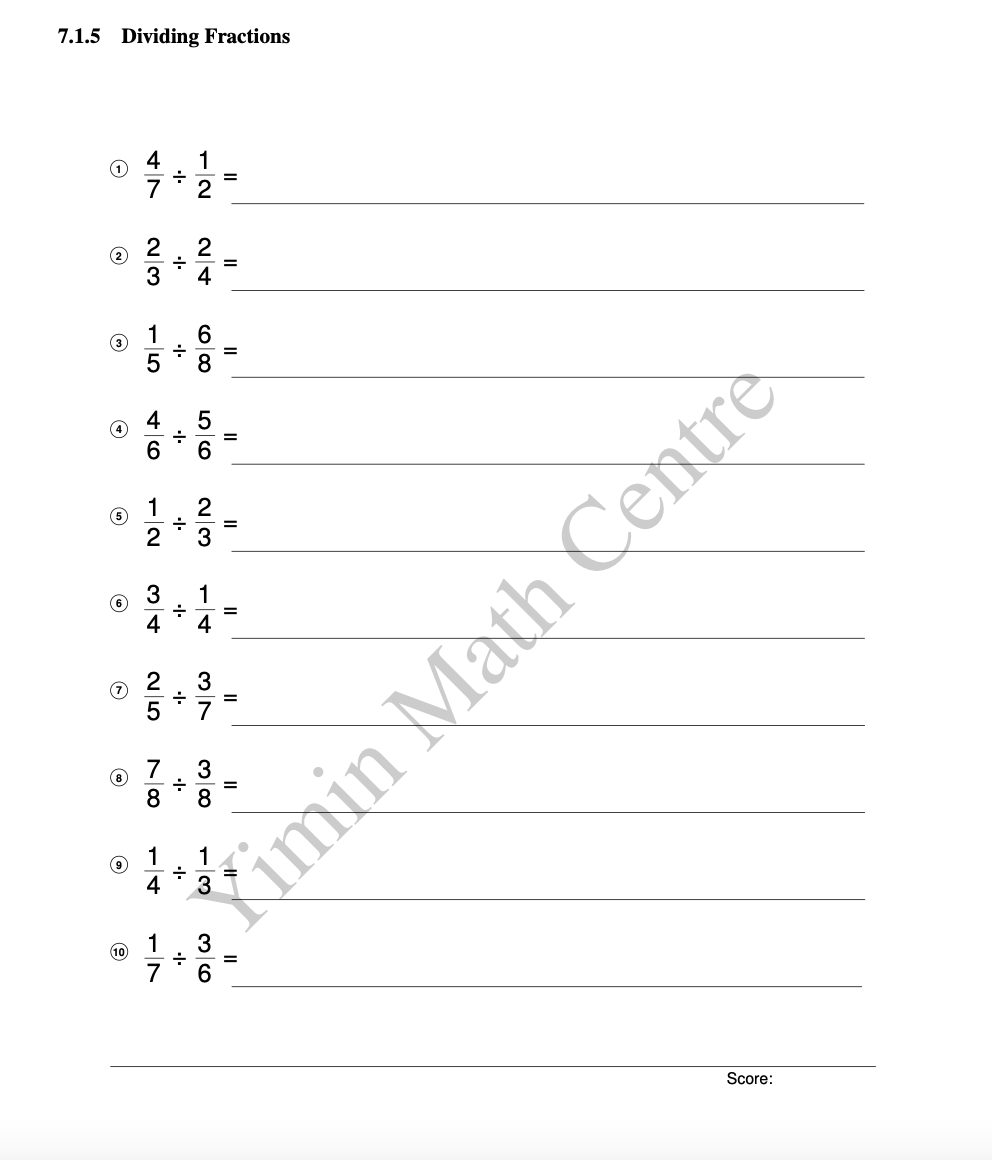
Step 7:
Name: Improper and mixed fractions
Learning Outcomes:
- Identify, name and write equivalent fractions of a given fraction, represented visually (ENCY5)
- Recognise mixed numbers and improper fractions and convert from one form to the other and write mathematical statements > 1 as a mixed number (ENCY5)
Recap
At this point, recap the concept of mixed fractions. Start by giving the worksheet to the student and asking them if they remember how to convert mixed fractions to top heavy (improper) fractions. If they do, give them 5 random questions from the first and second worksheet (10 questions in total) and if they are able to complete all of the questions correctly, move onto Step 8. If they struggle with converting mixed numbers to improper fractions, carry on with the rest of this step, starting with explaining what a mixed fraction is diagrammatically.
The students will need to understand how to convert mixed numbers to improper fractions and back fully before moving onto the next step.
Worksheet: Mixed numbers V 1
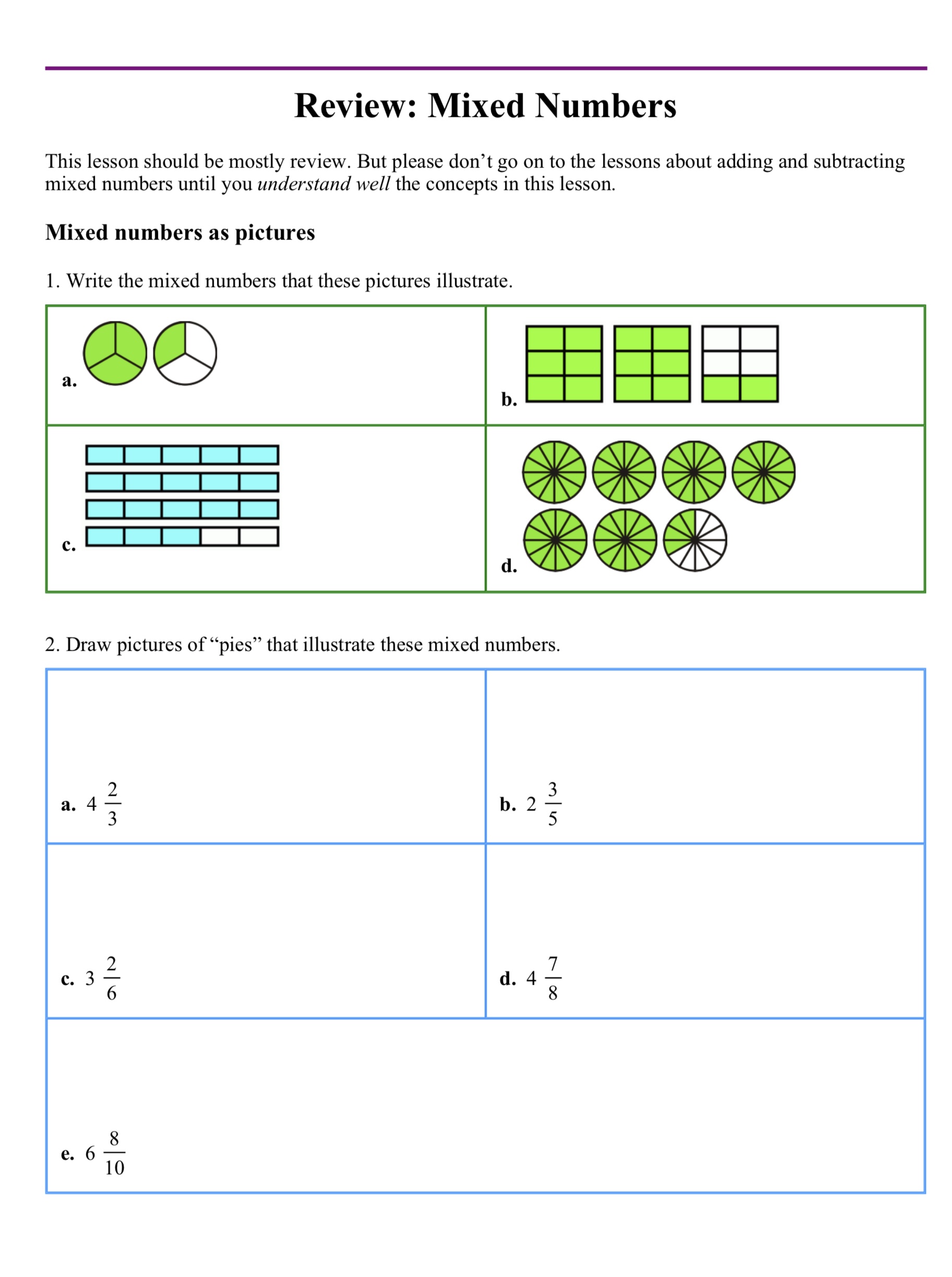
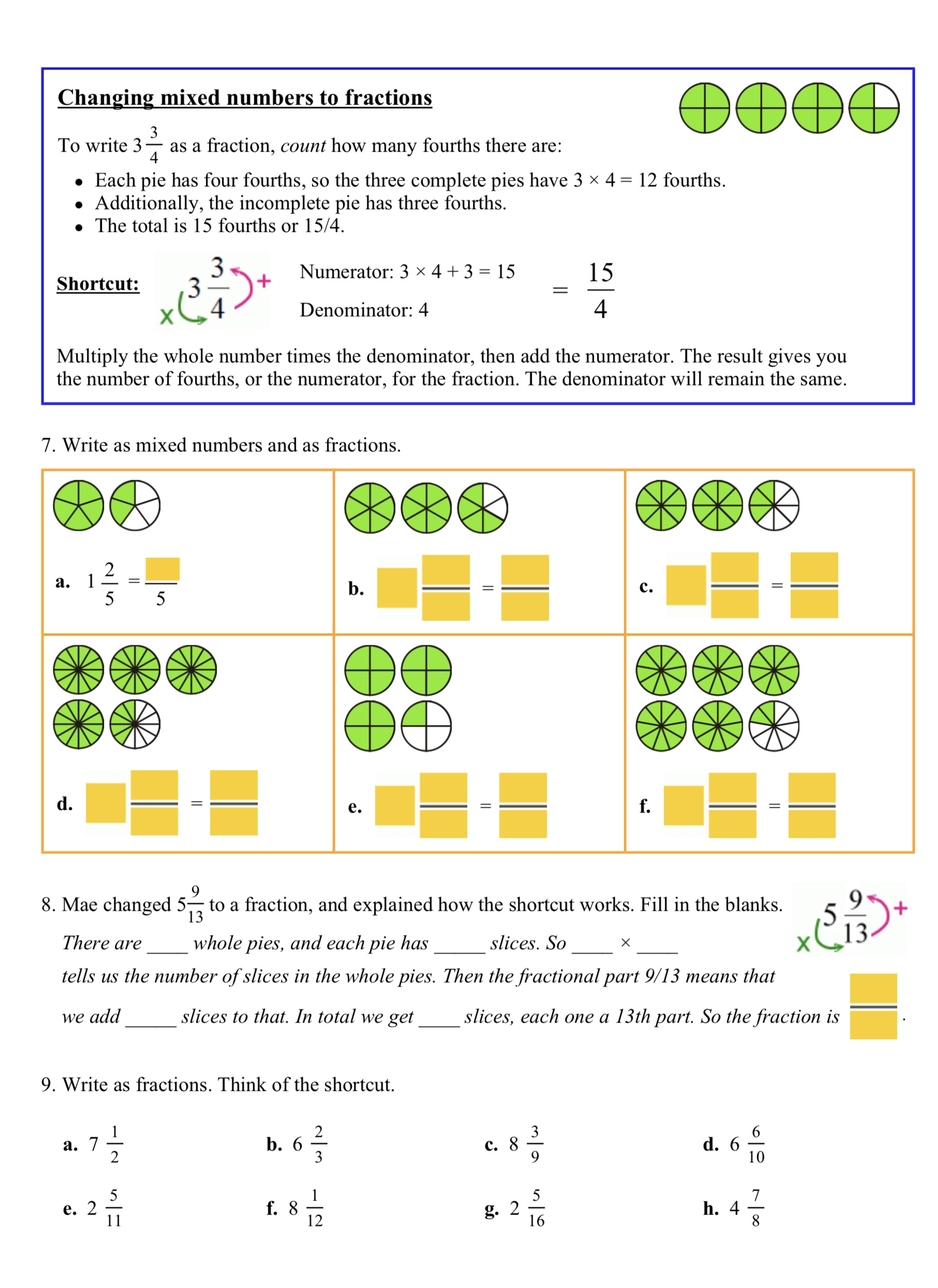
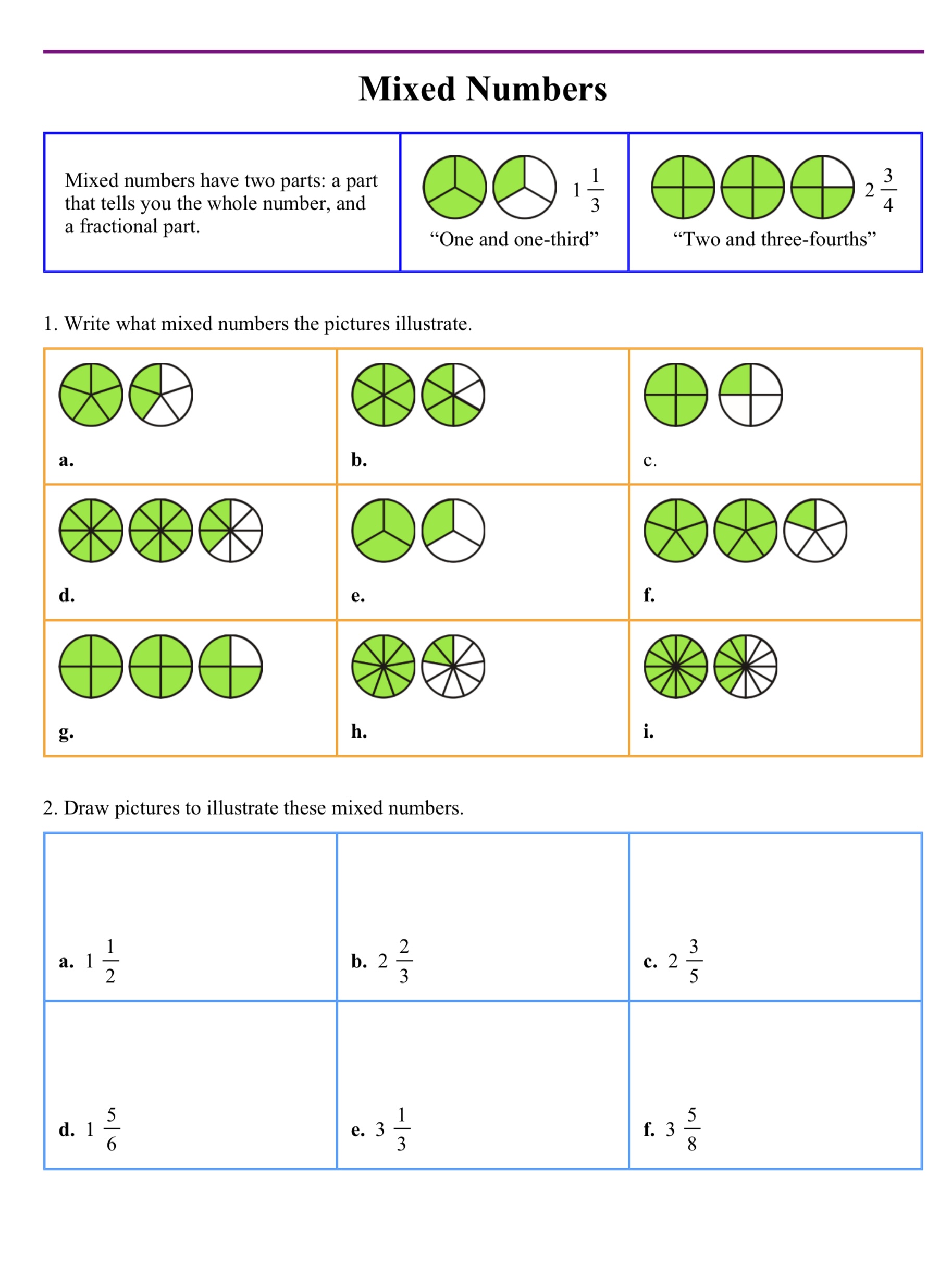
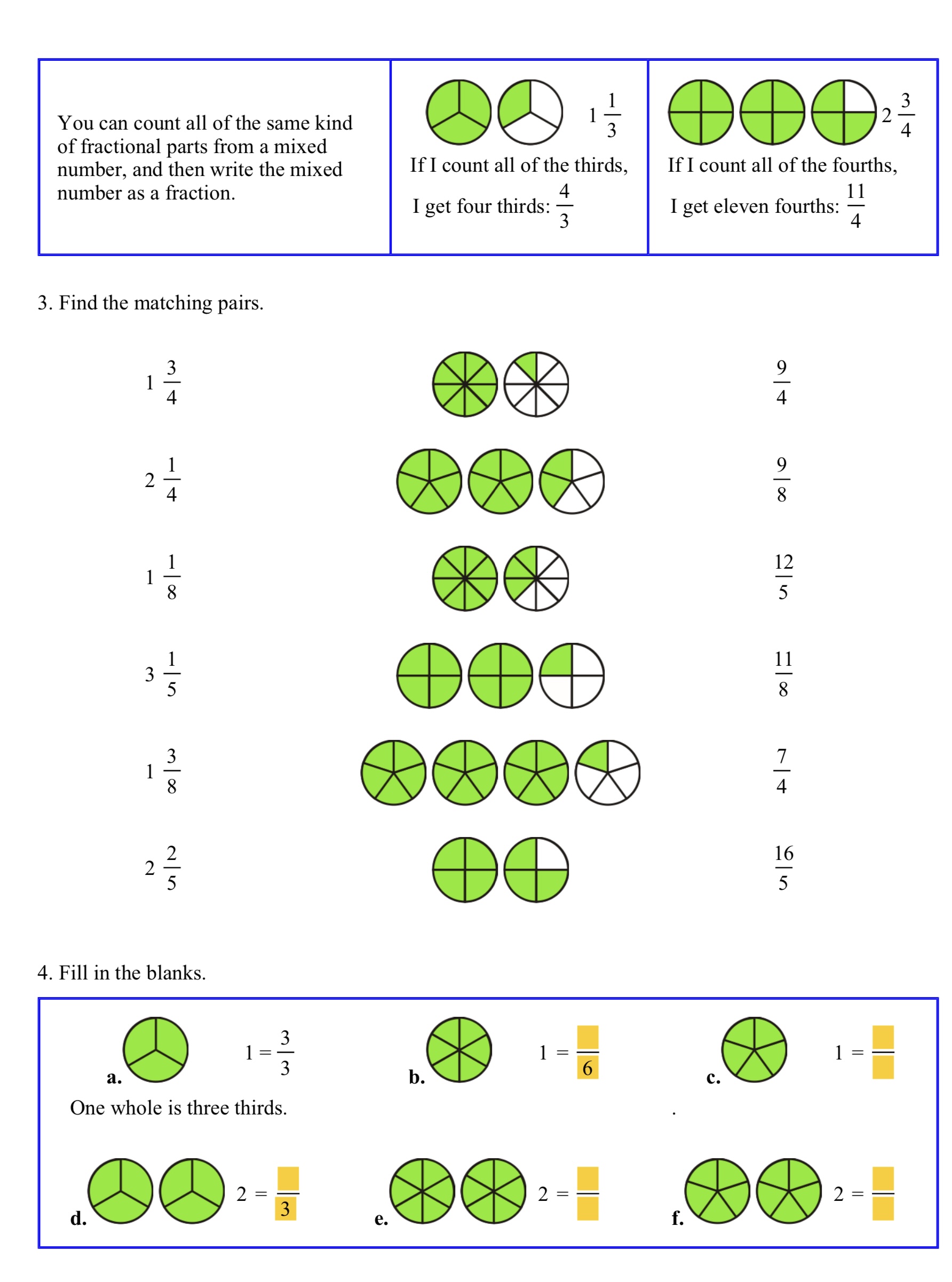
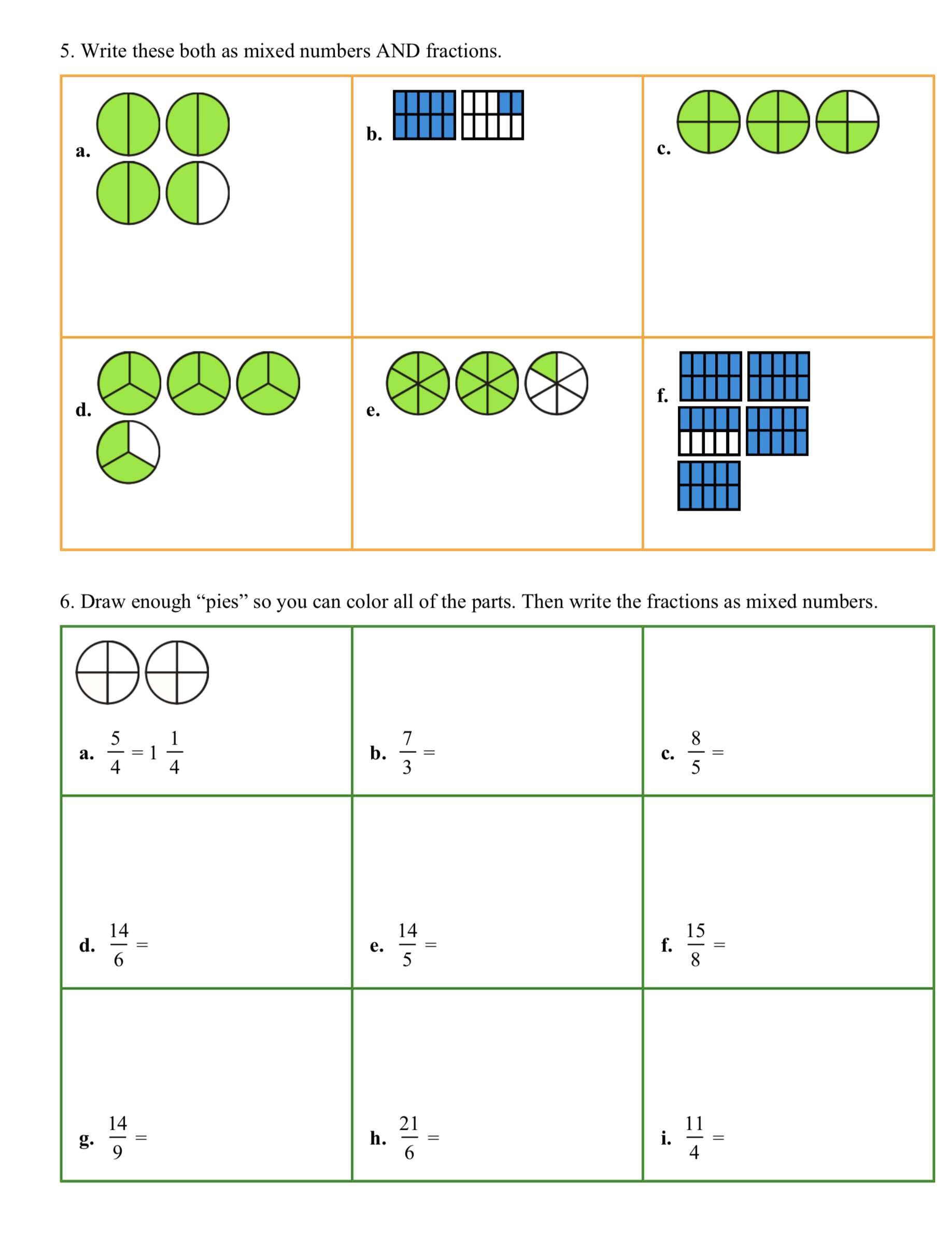
Step 8:
Name: Divide & multiply mixed fractions
Learning Outcomes:
- Solve problems involving increasingly harder fractions to calculate quantities, and fractions to divide quantities, including non-unit fractions where the answer is a whole number (ENCY4)
- Recognise mixed numbers and improper fractions and convert from one form to the other and write mathematical statements > 1 as a mixed number (ENCY5)
- Divide proper fractions by whole numbers and proper fractions (ENCY6)
- Multiply simple pairs of proper fractions, writing the answer in its simplest form (ENCY6)
Introduce concept
Before explaining the concept to them, ask them to try out the first question without any further instruction and see what they would do. If they struggle on it, ask them what the concept of divions means and if they are confused by this, explain that we do division all the time. Give them a real-life scenario of a piano lesson: If my piano lessons are half an hour and I did 10 hours of piano, how many lessons did I have? They should be able to grasp this quickly.
Once they have learnt the concept, explain that they can complete dividing a fraction by flipping the second fraction over and multiplying it. Once they understand this, let them get on with the rest of the worksheet, writing out their workings so you can check that they are flipping the fractions as they may forget them in their hurry to finish off the questions.
Worksheet: Divide mixed fractions D 2
Worksheet: Multiply mixed fractions D 5
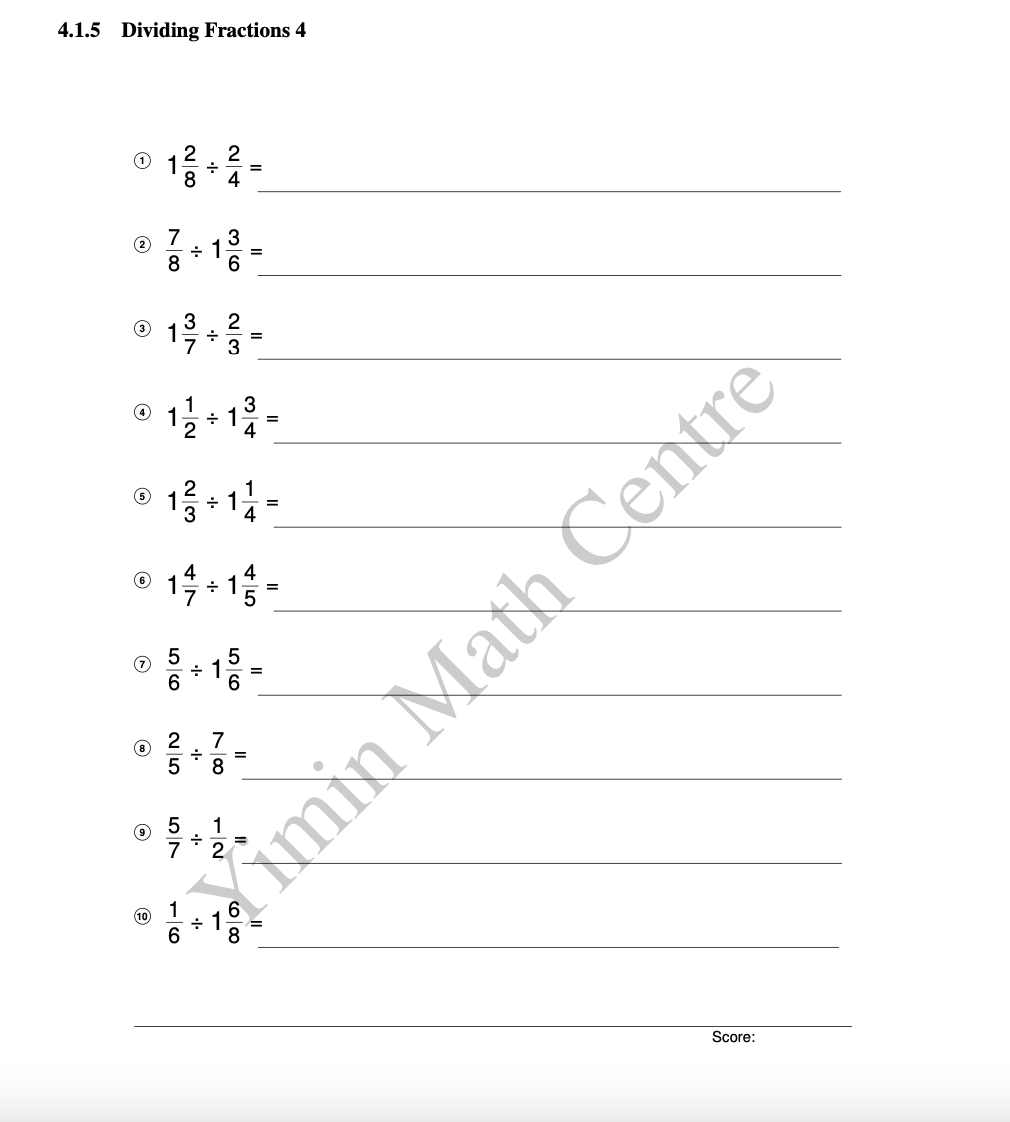
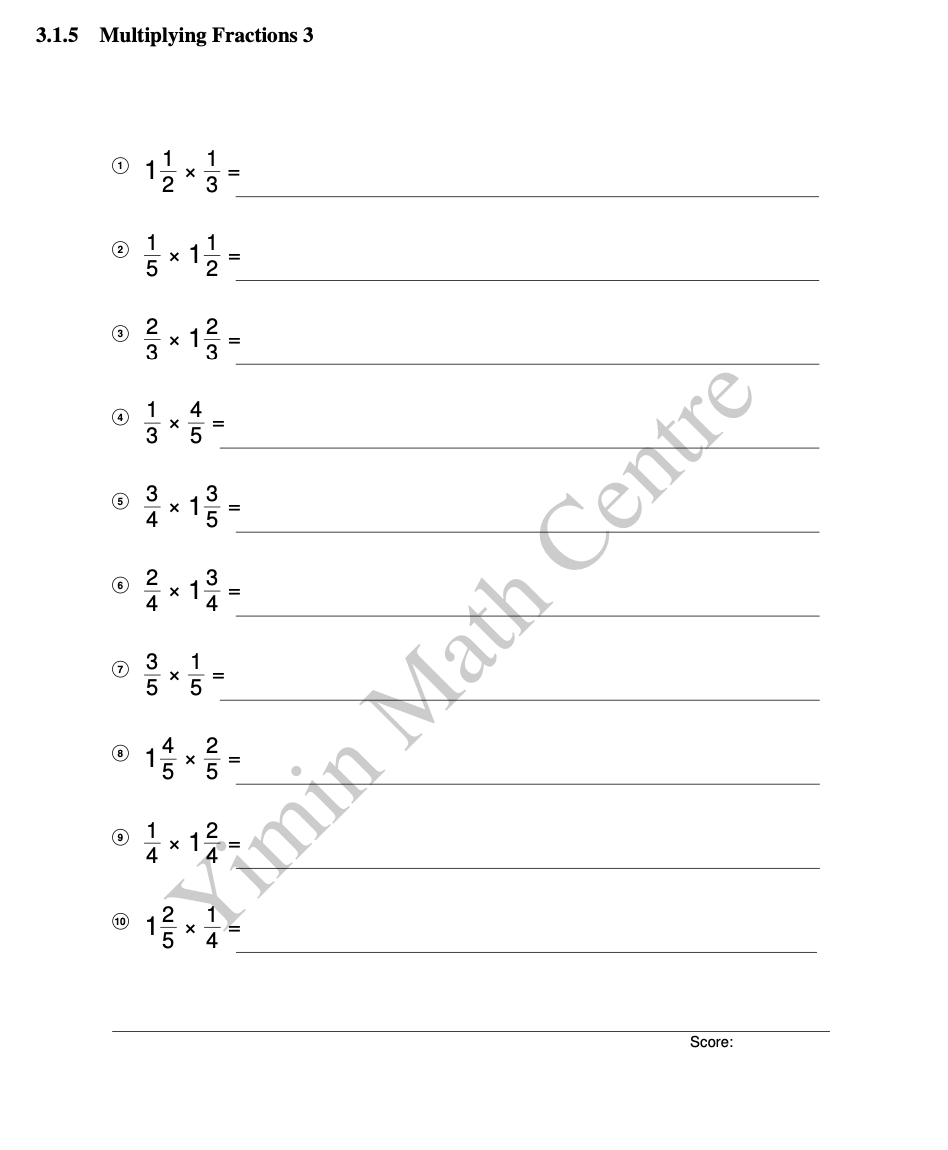
Step 9:
Name: Block method
Learning Outcomes
- Solve problems involving increasingly harder fractions to calculate quantities, and fractions to divide quantities, including non-unit fractions where the answer is a whole number (ENCY4)
Challenge questions
These students should now be able to complete this sheet on their own but prompt them to use the Bar Model that they learnt previously. They may make a few silly mistakes so encourage them to write out their workings and check through their answers again before submitting it to you to mark.
Worksheet: Block method fractions W 2

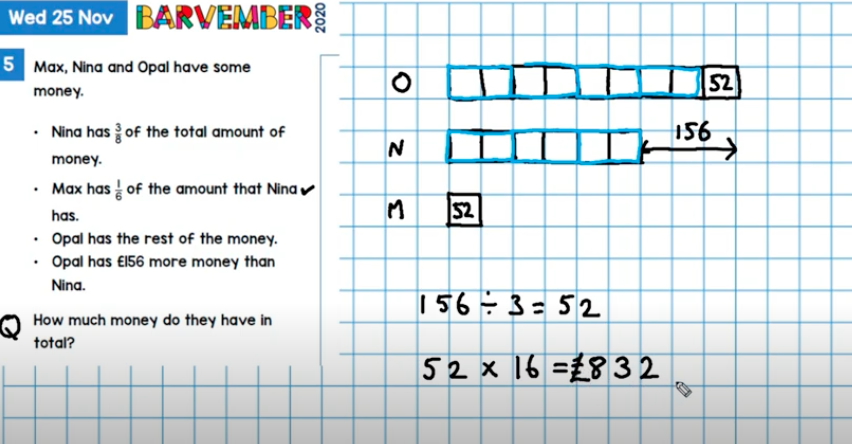
Step 10:
Name: Multiply/Divide mixed fractions
Learning Outcomes:
- Solve problems involving increasingly harder fractions to calculate quantities, and fractions to divide quantities, including non-unit fractions where the answer is a whole number (ENCY4)
- Recognise mixed numbers and improper fractions and convert from one form to the other and write mathematical statements > 1 as a mixed number (ENCY5)
- Divide proper fractions by whole numbers and proper fractions (ENCY6)
- Multiply simple pairs of proper fractions, writing the answer in its simplest form (ENCY6)
Timed exercise
Recap what the students have done in the previous steps with this timed exercise (set a timer for 15 minutes). This sheet is challenge so expect the students to skip over a couple of questions and go over these questions at the end of the timer.
Worksheet: Multiply divide mixed fractions D 1
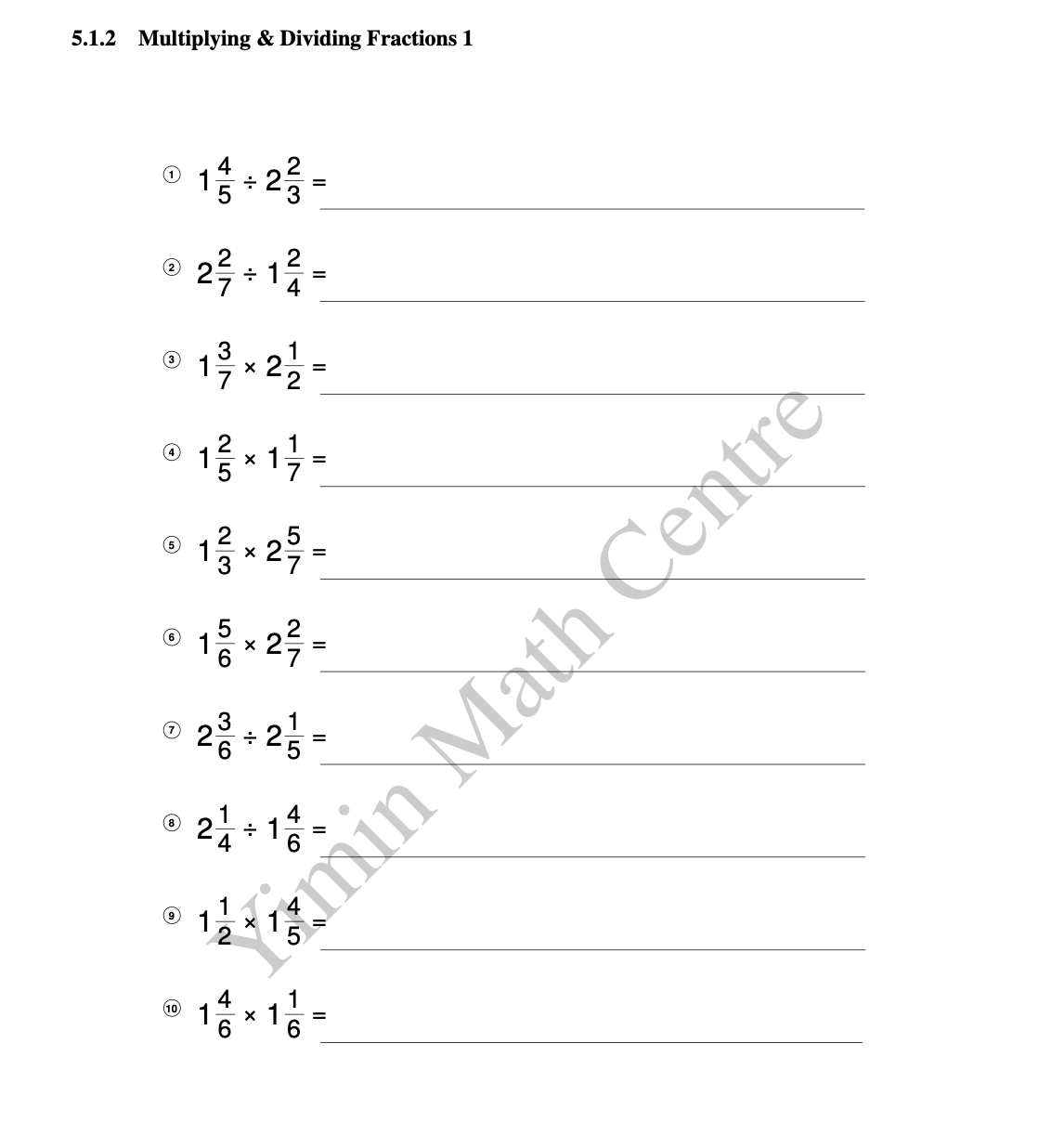
Step 11:
Name: Multiply/divide mix fractions
Learning Outcomes:
- Solve problems involving increasingly harder fractions to calculate quantities, and fractions to divide quantities, including non-unit fractions where the answer is a whole number (ENCY4)
- Recognise mixed numbers and improper fractions and convert from one form to the other and write mathematical statements > 1 as a mixed number (ENCY5)
- Divide proper fractions by whole numbers and proper fractions (ENCY6)
- Multiply simple pairs of proper fractions, writing the answer in its simplest form (ENCY6)
Challenge questions
This is a challenge fraction question and the students may need a quick reminder in using the Bowtie method to cross cancel. Give the students the question and ask what their first steps would be. If they are struggling with the question, help them out and work through it systematically, encouraging them to think about the next step and what they would do, before confirming or denying.
Worksheet: Multiply divide mixed fractions D 2

Step 12:
Name: Add/subtract mixed fractions
Learning Outcomes:
- Solve problems involving increasingly harder fractions to calculate quantities, and fractions to divide quantities, including non-unit fractions where the answer is a whole number (ENCY4)
- Recognise mixed numbers and improper fractions and convert from one form to the other and write mathematical statements > 1 asa mixed number (ENCY5)
- Add and subtract fractions with the same denominator and denominators that are multiples of the same number (ENCY5)
Word problems
These questions work best to round off the topic. The students should have a foundation of how to complete multi-step problems from Step 9 and this will help them solidify their understanding of how to approach these questions methodically.Review each question with the group/student at the end of the sheet.
Worksheet: Add subtract mixed fractions W 1
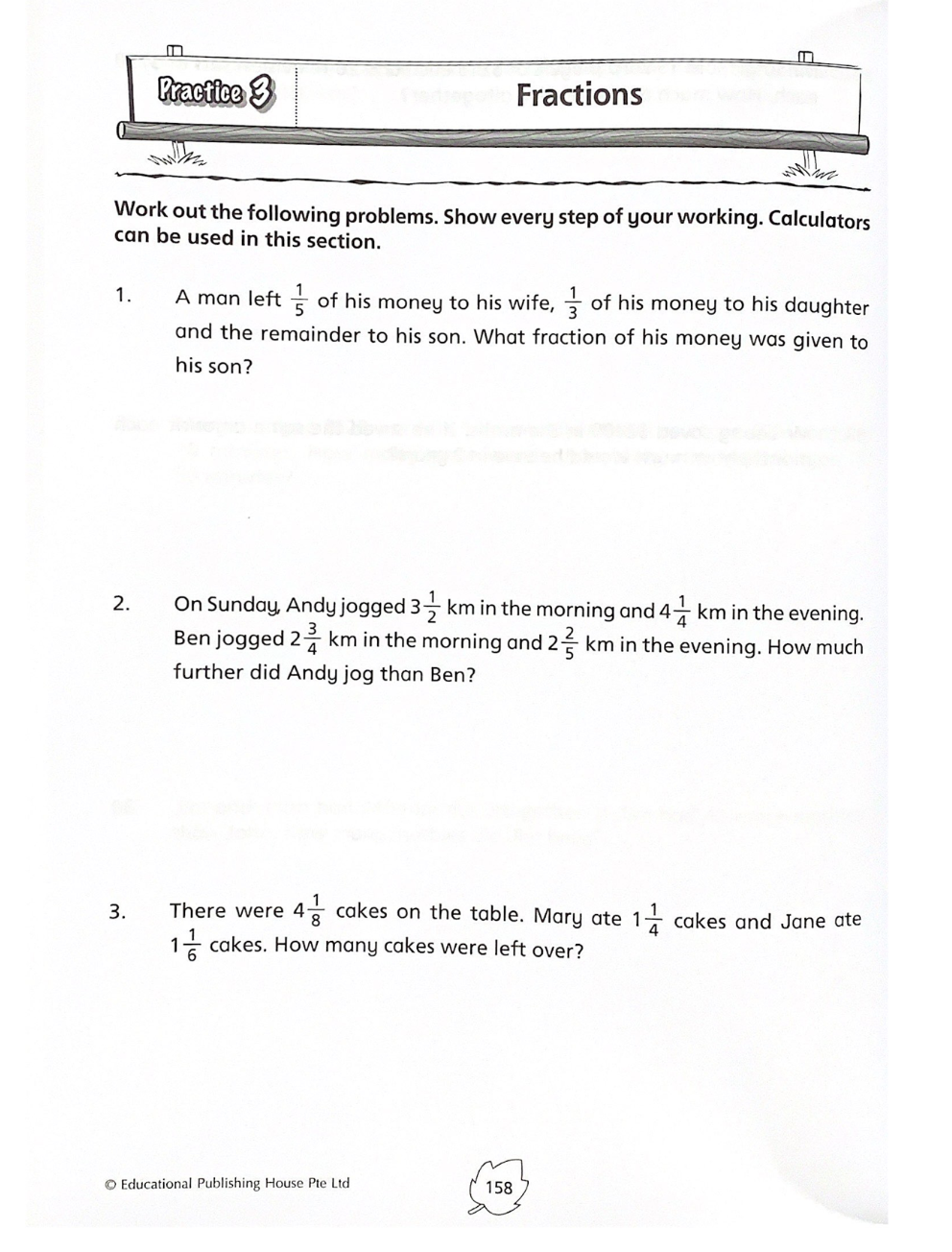
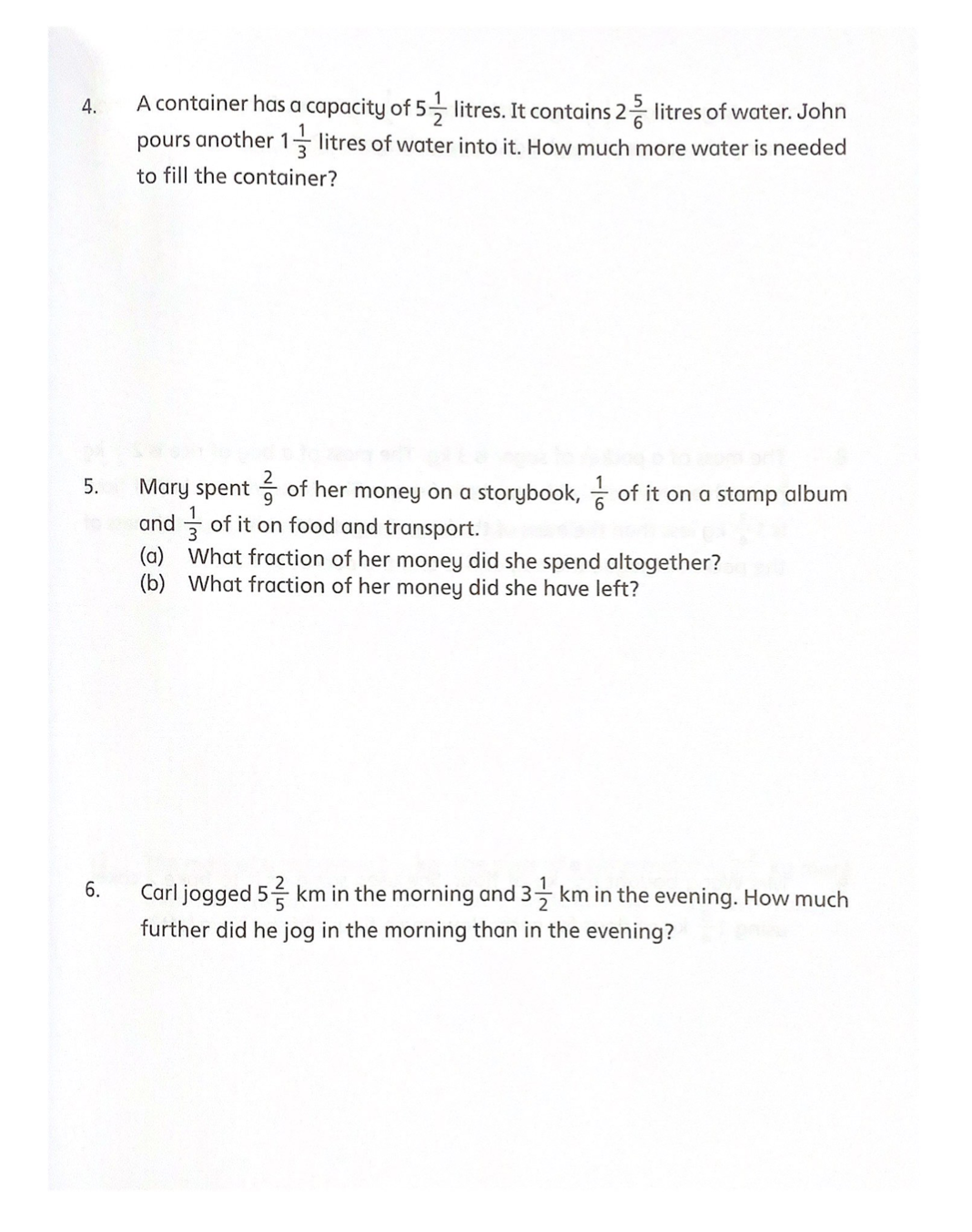
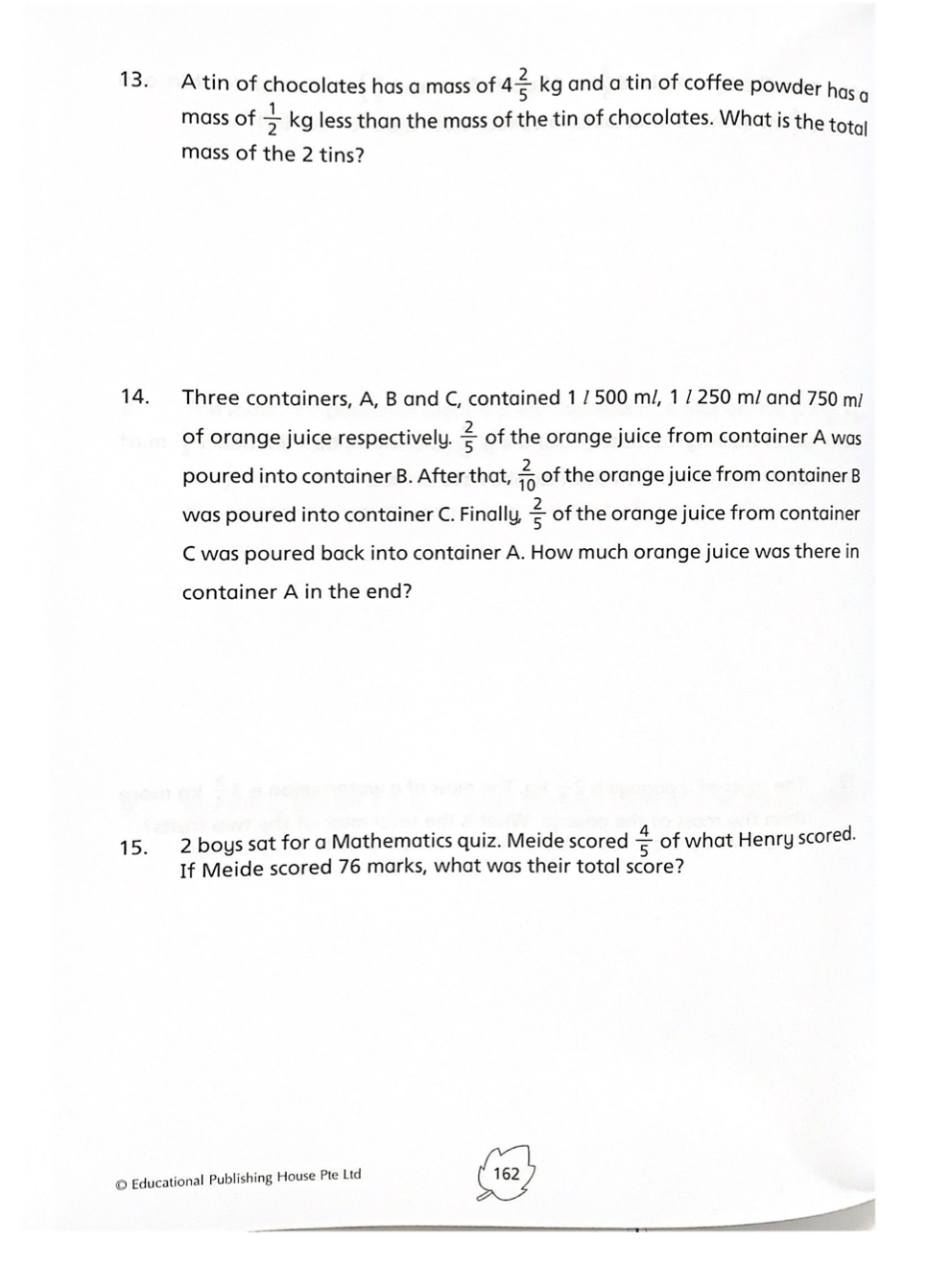
Learning Path completed
Learning Path completed
Learning Path completed